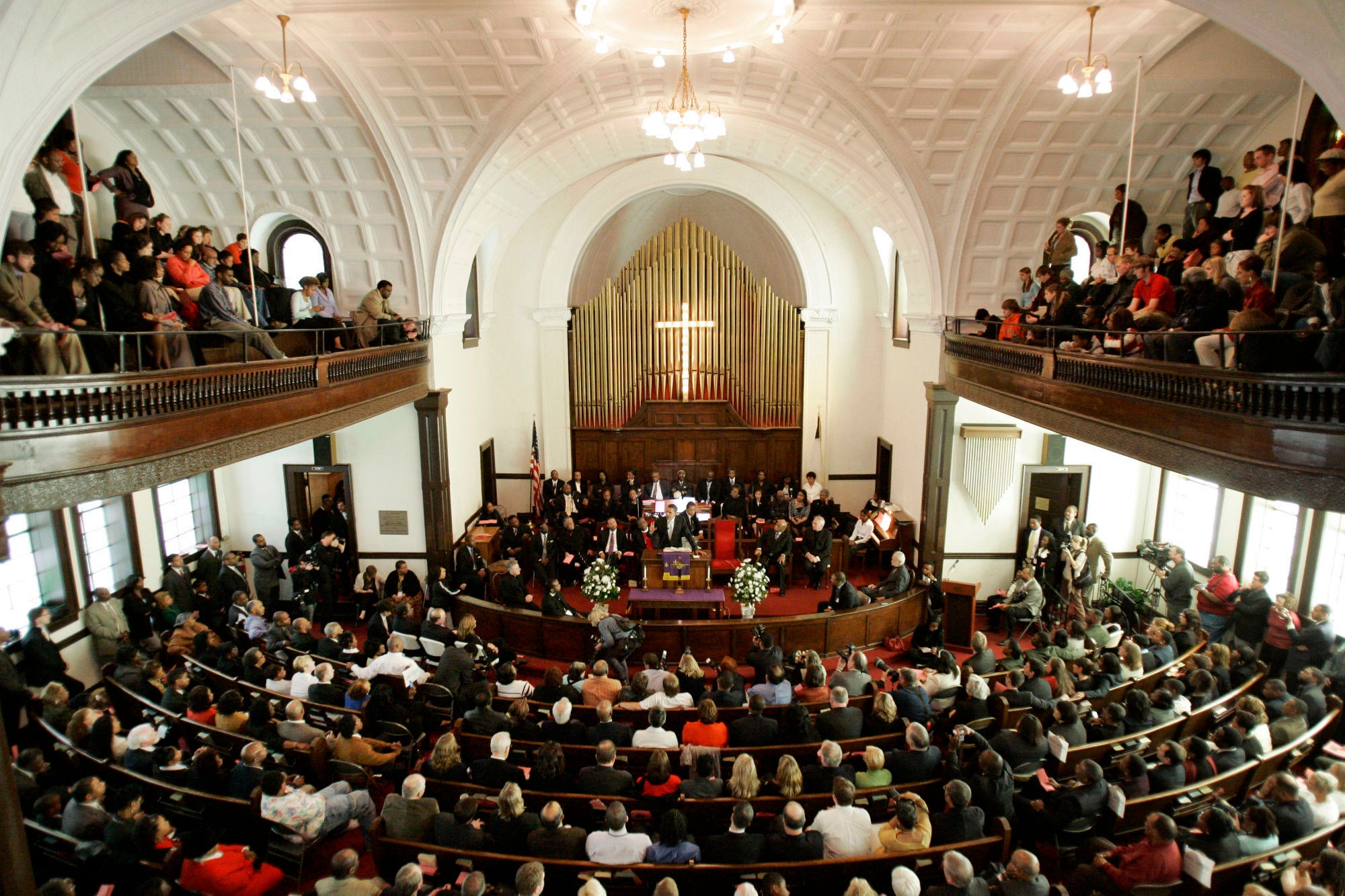Alabama church of 'Bloody Sunday' on endangered places list
An Alabama church that was at the center of the voting rights movement in the 1960s is now eaten up by termites and damaged by water leaks

Your support helps us to tell the story
From reproductive rights to climate change to Big Tech, The Independent is on the ground when the story is developing. Whether it's investigating the financials of Elon Musk's pro-Trump PAC or producing our latest documentary, 'The A Word', which shines a light on the American women fighting for reproductive rights, we know how important it is to parse out the facts from the messaging.
At such a critical moment in US history, we need reporters on the ground. Your donation allows us to keep sending journalists to speak to both sides of the story.
The Independent is trusted by Americans across the entire political spectrum. And unlike many other quality news outlets, we choose not to lock Americans out of our reporting and analysis with paywalls. We believe quality journalism should be available to everyone, paid for by those who can afford it.
Your support makes all the difference.Like religious congregants all over, the people of historic Brown Chapel AME Church turned off the lights and locked the doors at the beginning of the COVID-19 pandemic because it wasn’t safe to gather for worship with a deadly virus circulating. For a time, the landmark church that launched a national voting rights movement in Selma, Alabama, was off limits.
What members found when they returned was heartbreaking: Termites had eaten so much wood that parts of the structure weren't stable anymore, said member Juanda Maxwell, and water leaks damaged walls. Mold was growing in parts of the building, where hundreds met before Alabama state troopers attacked voting rights demonstrators on Bloody Sunday in 1965 at the Edmund Pettus Bridge.
“It's in horrible shape,” said Maxwell. “It's a tough time. Because we were closed for a year it exacerbated the problem with water coming in.”
The red brick church, with distinctive twin bell towers and a domed ceiling, tops this year's list of the nation's most endangered historic places, according to the Washington, D.C.-based, National Trust for Historic Preservation, a nonprofit organization which works to highlight and preserve sites that are in danger of being lost. Other places on the list include:
— Chicano/a Murals painted on the sides of buildings in Colorado and inspired by the human rights and cultural movements of the 1960s and ’70s.
— The Deborah Chapel, a Jewish mortuary building established in 1886 in Hartford, Connecticut.
— Francisco Sanchez Elementary School, the closed centerpiece of the town in Umatac, Guam.
— Minidoka National Historic Site, where more than 13,000 Japanese Americans were incarcerated during World War II in Jerome, Idaho.
— Shawnee Indian Manual Boarding School in Fairway, Kansas. Native American children were sent there during the 1800s to separate them from their culture and heritage.
— Picture Cave in Warrenton, Missouri, which holds indigenous artwork dating as far back more than 1,200 years by the Osage Nation.
— Brooks Park Art and Nature Center, the home and art studio in East Hampton, New York, of James Brooks and Charlotte Park, who were important in the abstract expressionism movement in American art.
— Palmer Memorial Institute, a boarding school built in 1902 for Black youths in Greensboro, North Carolina.
— Olivewood Cemetery, an African American burial ground in Houston, Texas, dating to 1875 and containing more than 4,000 graves.
— Jamestown, the site in Jamestown, Virginia, where enslaved people first arrived in America and where the first publicly elected assembly in the United States met.
Brown Chapel, the first African Methodist Episcopal church in Alabama, was the site of preparations for a voting rights march from Selma to Montgomery on March 7, 1965, when police beat marchers led by the late Rep. John Lewis, then a young activist. Weeks later, thousands gathered there before the Selma-to-Montgomery march led by the Rev. Martin Luther King Jr.
Maxwell is part of a group of Brown Chapel members serving on a foundation that's trying to raise money for repairs estimated to exceed $4 million, she said. The church, located in a public housing community, has only a few dozen members in regular attendance, so it's relying on grants and outside donations to fund the work.
The National Park Service already has provided a grant of $1.3 million for restoration of the church, which was constructed in 1908 by a formerly enslaved Black builder, A.J. Farley, and declared a National Historic Landmark in 1997.
“Our goal is to try to receive over $3 million in grants to do the foundational work. After that we hope to get in more private donations,” Maxwell said.
With members unable to gather in the building since repair work began in October, Maxwell said, the few who still attend continue meeting online.
“We’re Zooming. The pastor is searching for a place,” she said.